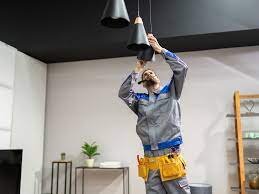Modern offices are more than just spaces to work—they’re places where productivity, health, and morale intersect. But maintaining a clean, healthy environment isn’t just about wiping down surfaces—it requires a clear, consistent process. Whether you’re managing a corporate suite or a co-working hub, understanding the five basic cleaning steps can help set the standard for hygiene and presentation.
Step 1: Declutter Before You Clean
Cleaning isn’t efficient if you’re constantly working around paperwork, coffee cups, or leftover lunch containers. The first step is to remove all unnecessary items from desks, floors, and communal areas. This allows cleaning teams to access every surface and ensures that nothing gets missed.
Imagine walking into a meeting room strewn with post-it notes, cables, and snack wrappers. Now imagine the same space with everything cleared away. A clutter-free environment immediately feels more professional—and it allows cleaning tasks to be completed quickly and thoroughly.
Step 2: Dusting and Dry Surface Cleaning
Once the area is clear, it’s time to deal with the dust. Dusting is often overlooked but essential, especially in spaces with air conditioning or open windows. Dust accumulates on high surfaces—shelves, monitors, ceiling vents—and even light fixtures.
Using microfibre cloths or electrostatic dusters ensures that particles aren’t just scattered into the air. This step helps prevent allergens from circulating and makes follow-up cleaning steps more effective.
Regular office air quality monitoring and proper ventilation contribute to healthier workplaces—and dust control plays a huge part in that.
Step 3: Wet Wiping and Disinfecting
Once dust and loose particles are out of the way, it’s time for wet cleaning. This step involves wiping down surfaces using an appropriate disinfectant, especially high-touch areas like door handles, light switches, desks, and shared equipment like phones or copiers.
Workplaces are often hotspots for germs. Without daily disinfection, illnesses can spread quickly—leading to increased sick leave and lower productivity. Using commercial-grade disinfectants helps break this chain, ensuring your team stays healthy and your workspace remains compliant with hygiene standards.
To reinforce this habit, some businesses now display visible cleaning checklists in kitchens and bathrooms—reminding both staff and cleaners to follow a standard routine.
Step 4: Floor Cleaning – Vacuuming, Mopping, and Spot Checks
Floors carry more than just footprints—they collect dust, debris, and bacteria throughout the day. In office environments, carpets trap allergens, while tiles and laminate floors collect grime that can lead to slip hazards if left unchecked.
Depending on your flooring, vacuuming or sweeping comes first, followed by mopping or spot treatment. In high-traffic areas like reception or kitchens, cleaners may need to perform additional spot cleaning during the day to maintain presentation standards.
Proper Office Cleaning should always factor in flooring material, traffic volume, and seasonality—since wet weather brings in more dirt.
Step 5: Final Checks and Rubbish Removal
No cleaning routine is complete without a final walkthrough. This step involves emptying all rubbish bins, replacing liners, and checking for any missed spots—under desks, behind doors, or in meeting room corners. It’s also a chance to restock supplies like toilet paper, hand soap, and sanitiser.
A good cleaner doesn’t just clean—they inspect. Final checks ensure quality control, prevent rework, and deliver a noticeable standard across all workspaces.
Plus, this is when the small details get attention—like straightening chairs or wiping down forgotten surfaces. These are the subtle signs that separate average cleaning from excellent Office Cleaning.
Why the Process Matters
Some might argue that cleaning is a basic service—but that’s far from the truth in a modern business context. Cleanliness has a direct impact on employee wellbeing, customer impressions, and regulatory compliance.
Let’s say a law firm brings in a high-profile client. The moment that client walks in, they’re scanning the office—judging its organisation, hygiene, and professionalism. A spotless boardroom and polished reception area send a clear message: this business pays attention to detail.
The same applies to employees. A well-maintained office promotes focus and reduces stress. It also helps prevent workplace injuries from spills, clutter, or broken bins that might otherwise be overlooked in a rushed clean.
Consistency is King in Office Cleaning
Consistency is what keeps offices looking good day after day—not a once-a-month deep clean. The five-step process we’ve covered ensures that every corner gets attention, from desktop to floor.
Many facilities now schedule evening or early-morning cleans to minimise disruption. Some even use QR codes in shared areas for staff to flag issues instantly, helping cleaning teams respond in real time.
Investing in quality Office Cleaning means more than ticking boxes. It reflects workplace values, supports team productivity, and safeguards public health.
Wrap-Up: Clean Space, Clear Mind
The five basic cleaning steps—decluttering, dusting, disinfecting, floor care, and final checks—form the backbone of every effective office cleaning routine. These steps may seem simple, but together they build the foundation for cleaner, safer, and more productive workspaces.
If you manage a business or facility, take time to review your current cleaning procedures. Are they consistent? Are high-touch points covered daily? Does the team know the importance of every step?
Answering these questions could be the difference between a workplace that simply looks clean—and one that actually supports your success

